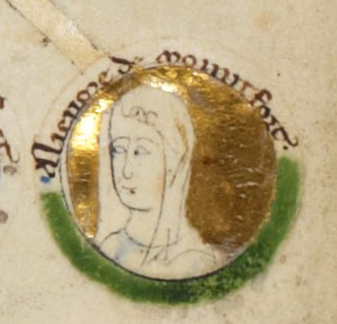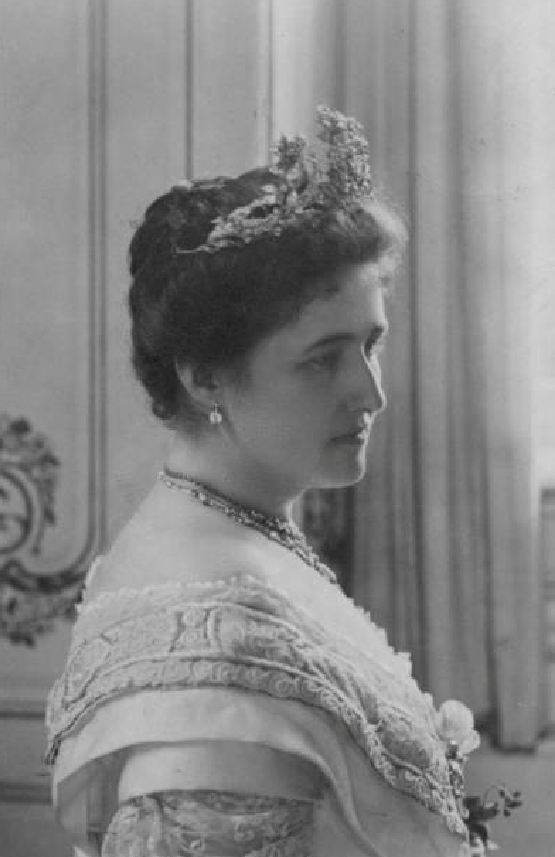by Susan Flantzer
© Unofficial Royalty 2024

An 1866 watercolor by Queen Victoria’s daughter Princess Louise showing a scene from the sinking of the Blanche Nef or White Ship. A male figure, probably William Ætheling, is shown in a lifeboat to the lower left. He is shown full-length, standing with his hands clasped together and looking up towards his half-sister Matilda, Countess of Perche who is still on board the ship. Drowning men are shown trying to climb into the small boat which is soon to capsize; Credit – Royal Collection Trust / © His Majesty King Charles III 2023
Matilda FitzRoy, Countess of Perche, who lost her life in the sinking of the White Ship, was the illegitimate daughter of King Henry I of England and a mistress identified only as Edith. Matilda’s birth date is unknown. King Henry I recognized at least twenty of his illegitimate children, including Matilda. Her surname FitzRoy comes from the Anglo-Norman Fitz, meaning “son of” and Roy, meaning “king”, implying the original bearer of the surname was a child of a king. Her paternal grandparents were King William I of England (the Conqueror) and Matilda of Flanders.
King Henry I holds the record for the British monarch with the most illegitimate children, 25 or so illegitimate children who were Matilda’s half-siblings.
Matilda’s royal half-siblings, the children of her father King Henry I and his first wife Matilda of Scotland were:
- Matilda (1102 – 1167), married (1) Heinrich V, Holy Roman Emperor, no children; (2) Geoffrey V, Count of Anjou, had three sons including King Henry II of England
- William Ætheling, Duke of Normandy (1103 – 1120), married Matilda of Anjou, no children, William Ætheling, King Henry I’s only legitimate son and heir, died in the sinking of the White Ship

Matilda’s husband Rotrou III, Count of Perche; Credit – Wikipedia
Matilda married Rotrou III, Count of Perche (circa 1077 – 1144) in 1103, becoming his second wife. The County of Perche was a medieval county between Normandy and Maine, in present-day France. Matilda’s husband took part in the First Crusade (1096 – 1099) and in the Reconquista in eastern Spain, a series of military campaigns that Christian kingdoms waged against the Muslim kingdoms.
As a dowry, Matilda brought lands in Wiltshire, England to the marriage. During their marriage, the couple received possession of the Bellême estate in Normandy, which had been confiscated from Robert of Bellême, 3rd Earl of Shrewsbury in 1102.
Matilda and Rotrou had two daughters:
- Philippa, married Elias II, Count of Maine, had one daughter
- Felicia
Because the Kings of England still held Normandy (in France) and were Dukes of Normandy, they were often in Normandy, and this was the case in November of 1120. After the successful military campaign in which King Henry I of England had defeated King Louis VI of France at the Battle of Brémule, the English were finally preparing to return to England. King Henry I was offered the White Ship for his return to England, but he had already made other arrangements. Instead, Henry suggested that his only son and heir William Ætheling, Duke of Normandy sail on the White Ship along with his retinue which included William’s illegitimate half-brother Richard of Lincoln, William’s illegitimate half-sister Matilda, Countess of Perch, Richard d’Avranches, 2nd Earl of Chester and many of the heirs of the great estates of England and Normandy.
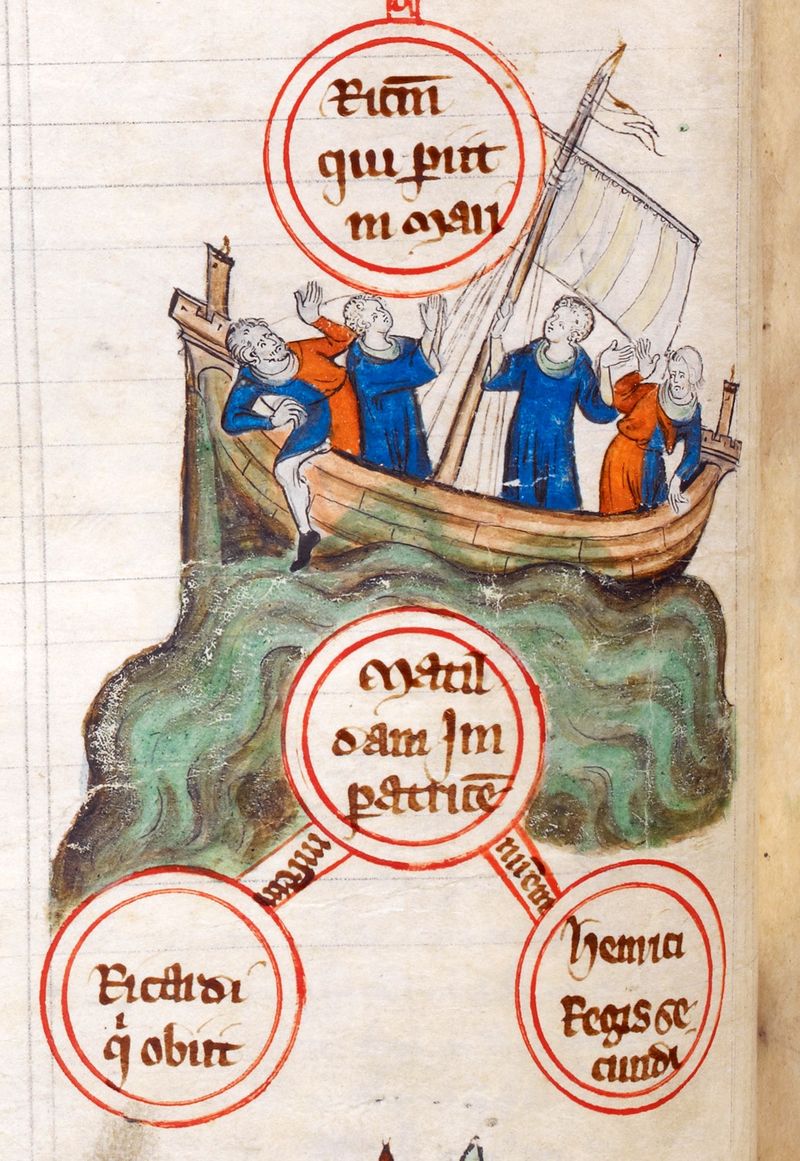
The sinking of the White Ship; Credit – Wikipedia
On November 25, 1120, William Ætheling and his retinue boarded the ship in a festive mood and barrels of wine were brought on board to celebrate the return to England. Soon both passengers and crew were inebriated. By the time the ship was ready to set sail, there were about 300 people on board, including many high-ranking people of Norman England. William and his retinue ordered the captain of the White Ship to overtake the ship of King Henry I so that the White Ship would be the first ship to return to England. Unfortunately, the White Ship hit a submerged rock and capsized. William’s bodyguard quickly got the heir to the throne into the safety of a dinghy. However, William Ætheling heard the screams of his half-sister Matilda, Countess of Perche, and ordered the dinghy to turn back to rescue her. At this point, the White Ship began to sink and the many people in the water desperately sought the safety of William’s dinghy. The chaos and the weight were too much causing William Ætheling’s dinghy to capsize and sink without a trace. The contemporary chronicler Orderic Vitalis claimed that only two people survived the shipwreck by clinging to a rock all night.

King Henry I mourning the loss of three children in the sinking of the White Ship; Credit – Wikipedia
The sinking of the White Ship caused King Henry I to lose two illegitimate children, Matilda FitzRoy, Countess of Perche and Richard of Lincoln, and most importantly, King Henry I’s only son William Ætheling. King Henry I holds the record for the British monarch with the most illegitimate children, 25 or so illegitimate children, but the tragedy of the White Ship left him with only one legitimate child, his daughter Matilda. Henry I’s nephews were the closest male heirs. In January 1121, Henry married a second time to Adeliza of Louvain, hoping for sons, but the marriage remained childless. On Christmas Day in 1226, King Henry I of England gathered his nobles at Westminster where they swore to recognize his daughter Matilda and any future legitimate heir she might have as his successors. That plan did not work out. Upon hearing of Henry I’s death on December 1, 1135, Stephen of Blois, one of Henry I’s nephews, quickly crossed the English Channel from France, seized power, and was crowned King of England on December 22, 1135. This started the terrible civil war between first cousins Stephen and Matilda known as The Anarchy. England did not see peace for more than 18 years until Matilda’s son acceded to the throne as King Henry II of England in 1154.

La Trappe Abbey today; Credit – Von PY. Stucki, CC BY-SA 2.0 fr, https://commons.wikimedia.org/w/index.php?curid=11471582
After her tragic death, Matilda’s husband Rotrou III, Count of Perche built a small chapel to the Virgin Mary, in Soligny-la-Trappe, then in the Duchy of Normandy, now in France, as a memorial to his wife. A few years later Rotrou built an adjoining monastery, the La Trappe Abbey, known for being the house of origin of the Trappists (also known as the Cistercians), to whom it gave its name.
This article is the intellectual property of Unofficial Royalty and is NOT TO BE COPIED, EDITED, OR POSTED IN ANY FORM ON ANOTHER WEBSITE under any circumstances. It is permissible to use a link that directs to Unofficial Royalty.
Works Cited
- Beauclerk-Dewar, Peter, & Powell, Roger. (2006). Right Royal Bastards – The Fruits of Passion. Burke’s Peerage & Gentry LLC.
- Flantzer, Susan. (2015). The Sinking of the White Ship and How It Affected the English Succession. Unofficial Royalty. https://www.unofficialroyalty.com/november-25-1120-the-sinking-of-the-white-ship-and-how-it-affected-the-english-succession/
- Spencer, Charles. (2022). The White Ship: Conquest, Anarchy and the Wrecking of Henry I’s Dream. William Collins.
- Weir, Alison. (2008). Britain’s Royal Families – The Complete Genealogy. Vintage Books.
- Wikimedia Foundation. (2023). Matilda Fitzroy, Countess of Perche. Wikipedia. https://en.wikipedia.org/wiki/Matilda_FitzRoy,_Countess_of_Perche
- Wikimedia Foundation. (2023). Rotrou III, Count of Perche. Wikipedia. https://en.wikipedia.org/wiki/Rotrou_III,_Count_of_Perche





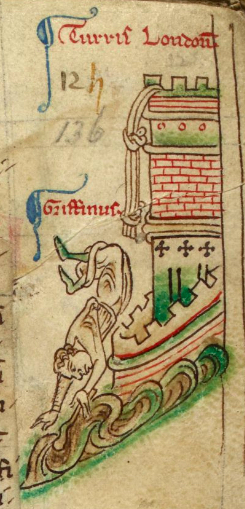
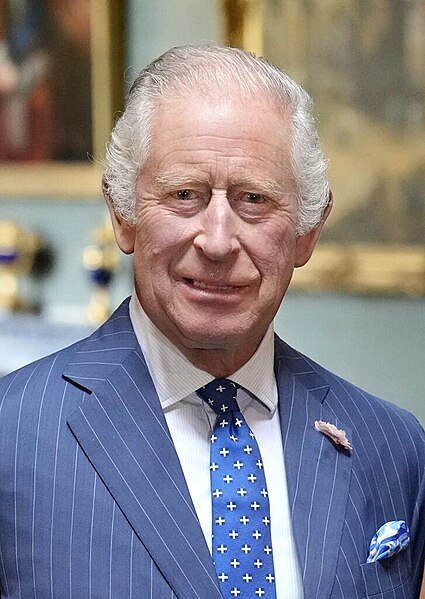 Just hours after it was announced that The Princess of Wales had undergone successful abdominal surgery, Buckingham Palace announced that King Charles III will be treated for a benign prostate condition next week. The statement stresses that it is a benign condition, but the King will undergo a “corrective procedure”. The King’s engagements will be postponed for a brief period of time.
Just hours after it was announced that The Princess of Wales had undergone successful abdominal surgery, Buckingham Palace announced that King Charles III will be treated for a benign prostate condition next week. The statement stresses that it is a benign condition, but the King will undergo a “corrective procedure”. The King’s engagements will be postponed for a brief period of time.

